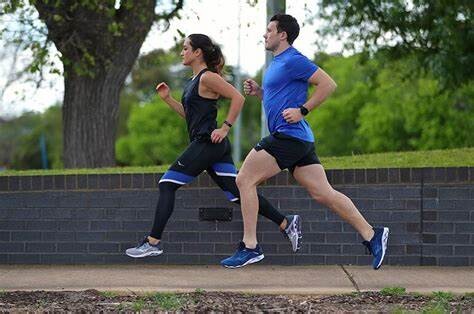Running News Daily
Running News Daily is edited by Bob Anderson. Send your news items to bob@mybestruns.com Advertising opportunities available. Train the Kenyan Way at KATA Kenya and Portugal owned and operated by Bob Anderson. Be sure to catch our movie A Long Run the movie KATA Running Camps and KATA Potato Farms - 31 now open in Kenya! https://kata.ke/
Index to Daily Posts · Sign Up For Updates · Run The World Feed
Are distance intervals easier than time?
Minutes or meters? We delve into what's easier for interval training.
As the 2024 racing season winds down, many runners are shifting their focus toward winter base training. While goal races are still months away, staying motivated for off-season workouts can be challenging. Last week, I found myself in that position when my coach presented me with two workout options: three reps of four minutes at 3:20/km paired with six reps of two minutes (at a bit faster), or three reps of 1,200 metres and six reps of 600 metres. I chose the second option.

On paper, the workouts are different, but they both have the same aim to improve 5K/10K speed and threshold levels. The question is: does knowing the exact distance make the session feel easier than time-based intervals?
A psychological advantage

With distance intervals, the start and finish are clearly defined. For instance, when given one-kilometre reps, you know exactly where each begins and ends. Many runners find comfort in seeing their progress in measurable terms, which is why structured workouts on a track are popular. For example, if you’re completing a 1,200-metre rep on a standard 400m track, it offers three distinct checkpoints—one per lap—helping you break the effort into manageable chunks. Hitting those markers can provide a psychological boost, making the workout feel more achievable
Time-based intervals, on the other hand, lack these physical endpoints. Each rep relies on the clock, requiring runners to maintain focus and effort without the aid of visible milestones. This can make the session feel more open-ended, even if the physical demands are identical to distance intervals. With time intervals, you’re left to pace yourself based on feel, pushing through the uncertainty of not knowing exactly how far you’ve gone—or have left (unless you’re looking at your watch).
What’s best for you?
Both distance- and time-based intervals are effective for building speed and threshold levels. The choice depends on your personal preference and mental approach to workouts. If you thrive on structure and measurable progress, distance intervals might feel more manageable and motivating. But if you’re looking to embrace discomfort and practice sustaining effort without clear markers, time intervals can offer a unique challenge.
While distance intervals may seem easier, that’s not to say time intervals should be avoided entirely. Alternating between the two can develop mental and physical strengths, helping you become a stronger, versatile runner. Whether you’re counting minutes or metres, the ultimate victory is getting out there, putting in the work, and reaching your goals.
by Marley Dickinson
Login to leave a comment




